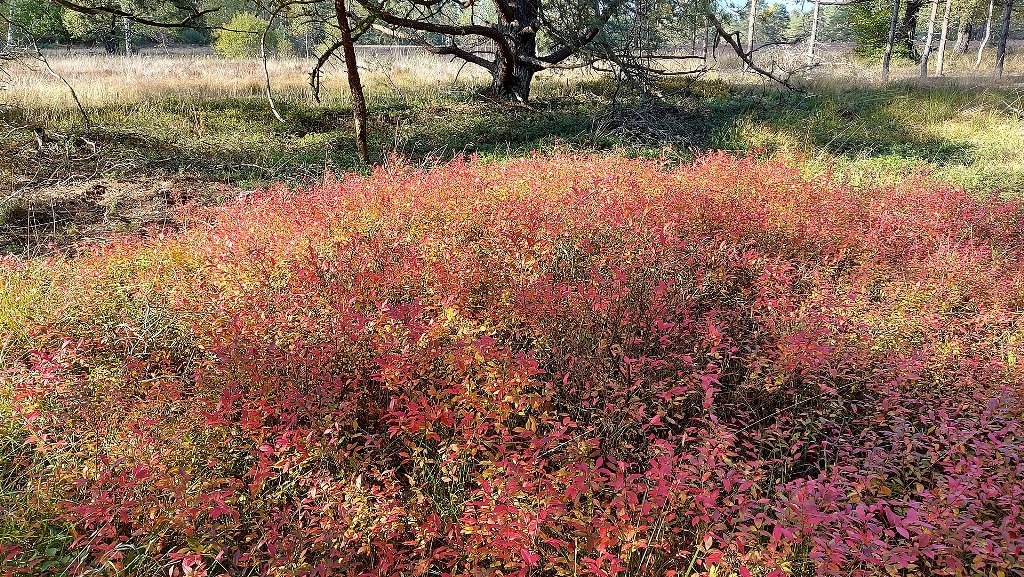
This time of the year, late summer or early autumn, the Heather family or Ericaceae, come to their own!
Many heathlands and mountain sides are painted purple with Calluna vulgaris or Common Heather or Ling as it is also known by.

The Vaccinium myrtillus or Bilberry put on their orange and red coats. Not many people know that this family is also very ornamental in Autumn!
According to The Wild Flower Key they are “shrubs (and rarely trees) with simple , usually narrow leathery, mostly evergreen leaves without stipules. Petals are joined into a tube and the fruit is a berry or capsule.
Attractive , distinctive family, mainly low shrubs of acid soils.”
In Stace it is family number 108 and is placed in between two exotic families: the insectiverous Sarraceniaceae or Pitcherplant family and the Garryaceae or Spotted-laurel family.
Stace describes 17 different genera, 5 of which are non-native and introduced as ornamental in the Victorian era or later. All will be listed below in the contents and more fully described on the next page with their known ethnobotanical or wildlife uses.
- A link on the Scientific Name is usually information of the Online Atlas of the British and Irish Flora and the information of ecology of that plant in the B.I. also comes from that website. The link on the Common Name is often from Wikipedia or another good website in the U.K.
- When described in the Flora of Birmingham & Black Country FBBC is added next to the plant in the contents below.
- Most of the ethnobotanical uses are of Wikipedia or PFAFwith links provided.
- Picture credits by Mike Poulton (M.P.), Matt Summers (M.S.) or from Wikipedia Commons.
Contents:
Arbutus unedo or Strawberry-tree
Arctostaphylos or Bearberries
Empetrum nigrum or Crowberry FBBC
Rhododendron or Rhododendrons
R. ponticum and R. luteum or Yellow Azalea FBBC
